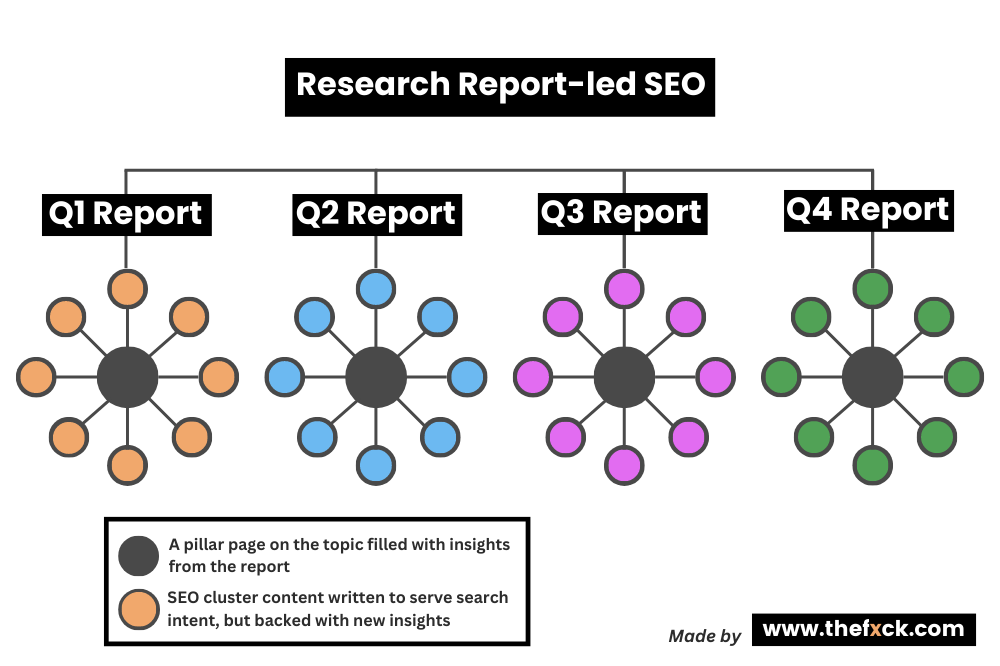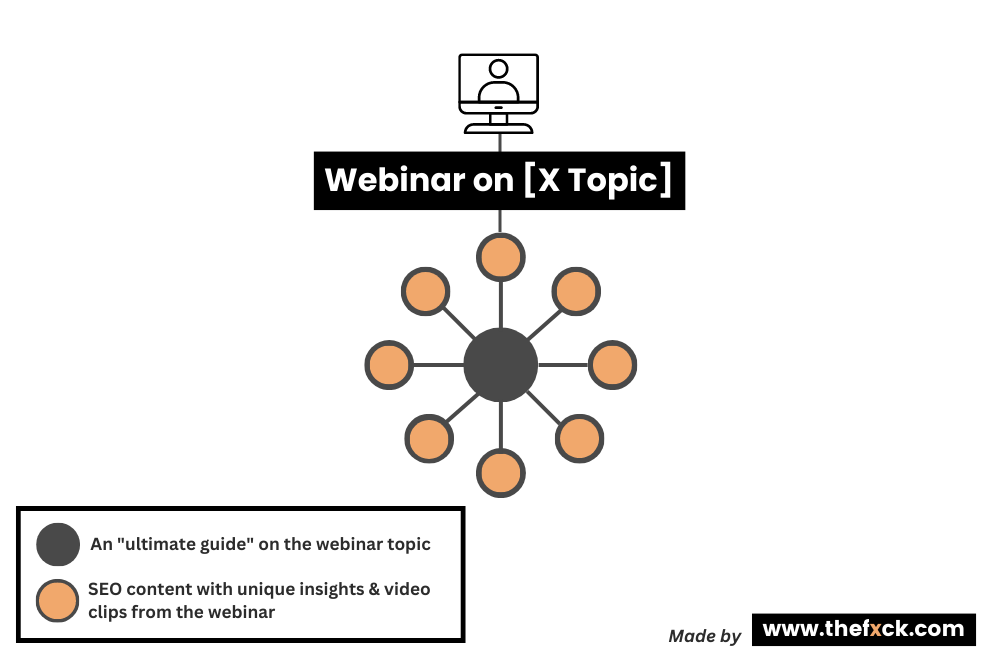If your SEO content fails to:
- Show earned secrets
- Encourage new ways of thinking
- Convey what makes your brand unique
Then it won’t position your brand as a trusted authority that’s top of mind for a prospect.
It’s easy to forget that this is the purpose of most content types. Content should build connection, awareness, and trust with potential buyers to improve the rate and speed of conversion.
“Who cares about ranking if you're not hitting your numbers? At the end of the day, that's what matters. You can go brag that you've got all these blog posts to rank on page one, I used to do that, but at the end of the day, if none of those page views are leading to conversions or leads for the sales team, or high-quality leads that the sales team can actually close, then what good is the traffic?”—Erin Balsa, How the F*ck Podcast
In my chat with Ryan Law last November, we discovered 4 types of thought leadership content (for example, my favorite: challenging truisms).
And in my latest case study with Erin Balsa, we learned how to build a thought leadership-led SEO strategy (don't miss her #1 tip for scaling quality in a content velocity workflow).
So I think it's time to look at some practical ways to scale quality content.
When you don't have a sh*t ton of time & money to invest, these frameworks should help.
Without further ado, this is how you avoid creating generic, forgettable content (so you don't spend money doing what AI does in 5 minutes).
8 New Frameworks for Scaling Quality Content (for SEO)
1. The Research Report-Led SEO Framework
I called this Thought Leader SEO in the latest SEO case study with Erin Balsa. To execute this framework, you need to follow these steps:
- Define a topic cluster you want to win
- Create a thought leadership report on that topic
- Include the insights and data from the report in each article in your pillar/cluster content
You do the work of collecting new data and forming industry-shaking opinions once.
And then reuse those insights to make sure all your content on that topic conveys those findings.

2. The Webinar Repurpose Framework
Instead of a thought leadership report, you get your unique insights from an expert-led webinar.
Here are the steps to follow:
- Define the topic cluster
- Setup a webinar and invite 3-5 industry experts
- Lead a discussion on the topic—pre-plan questions and FAQs you’ll need for your content
- Create the topic cluster and embed video clips and quotes from the webinar throughout

One thorough webinar can be used to make 20 high-quality articles on that topic, with brand-new opinions and quotes.
(You can do this with a weekly podcast, too, just like I do in this example here).
3. The Employee Insight Framework
I’ve talked about this a few times on LinkedIn now. In previous roles, we would run a simple Google Forms survey with our CEO, COO, and VP of Education to get their unique insights on a topic.
I also asked colleagues to sit down and share their wisdom (for example, when I wrote this article for CustomerGauge I interviewed our Director of Customer Success).
Every employee is an untapped resource for creating authentic content. Encourage them to share their experiences and knowledge through surveys or interviews.
4. The Community Insight Framework
Your newsletter list or community group can provide a significant amount of unique material at a relatively low cost.
Start by defining a topic cluster and all the common questions that come up, then ask your community to contribute.
Curate the responses to help give community-led answers in each SEO article, adding a sparkle of unique earned secrets in every piece.
5. The Curated Insight Framework
Similar to the user-generated insights in #4, but the curated insight content pulls data from sources across the web.
My go-to is always Reddit.com. Use the site search (site:reddit.com) with your topic to find comments and opinions from the web.
This doesn't mean simply reposting others' content, but adding your own insights, commentary, or perspective helps create a unique piece of content with less effort.
6. The Expert Panel Framework
As we heard in the healthcare SEO case study with Ryan Darani, it’s effective to build an advisory board of experts you can lean on for opinions, advice, and fresh sources for your content.
“We lean on those guys to guide us into where we can pull data and stats.”—Ryan Darani
If you have the budget, try building a team of people working in the field right now who are on standby to offer quotes and stories for any piece of content.
In our case study with Living Cozy, we found out how Ash Read built an automated process for free to make sure all his content had expert input.
7. The Social Media Survey Framework
Whether you’ve built a following on Twitter or LinkedIn, you can involve them in your content with surveys.
Not only does this engage your audience and create coherency between your SEO content and social media, but it makes sure your SEO content has brand-new insights that readers will love.
I really like how Search Pilot engages their audience before they do an SEO experiment. They then fold their follower’s opinions into the final article (example here):
8. The Strong Opinion Framework
To really make your content “fly” it should be hard-baked with your strategic narrative.
“A strategic narrative is a special kind of story. It says who you are as a company. Where you’ve been, where you are, and where you are going. How you believe value is created and what you value in relationships. It explains why you exist and what makes you unique.”—HBR
To scale your strategic narrative, it needs to be documented and understood by every writer. Only then does all your content scale with the same message—one that brings your je ne sais quois to the market.
Erin Balsa calls this the most important piece of documentation you can have in your content operation. Read more in this week’s full case study.
—
If you found this post helpful, please help me grow by sharing this article with a friend or colleague.
Lots of love,
Ben


